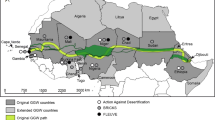Abstract
Deforestation in Costa Rica has proceeded at a rapid pace. Of the remaining 2,700 km2 of virgin forests on privately-owned land, over 300 km2 are being deforested each year. Pressure on National Parks, which cover about 27 percent of Costa Rica is likely to increase in the future. Preliminary information indicates that, contrary to our expectations, most of the deforestation at present is not being done by squatters, but driven by profit and asset maximization motives of the timber industry, banana companies, and large cattle ranchers. Setting aside 27 percent of the country's land as parks and reserves was a major policy decision. Aside from the removal of some “perverse” incentives operating inside park areas, the main issue there is one of sound management, including protection from intruders, strengthening enforcement, and controlled “tourism”. On the remaining primary and secondary forest areas on privately-owned land outside the parks, a key question is whether public interests connected with external costs of deforestation warrant public intervention. The paper suggests that a differentiated approach to this and other questions is needed, depending on the costs and benefits involved, and it discusses incentives and regulations which influence land use, and makes proposals for reforms.
Similar content being viewed by others
References
Aguilar, Irene, and Manuel Solis (1988), ‘La Elite Ganadera en Costa Rica’, Editorial Universidad de Costa Rica, p. 141.
Anderson, Jock and Jesuthason Thampapillai (1990) ‘Soil Conservation in Developing Countries: Project and Policy Intervention’, Policy and Research Series, No. 8, World Bank.
Baltodano, VictorJulio, RobertoChavez, FranciscoSequeira, and LaureanoMontero (1988), ‘FODEA’, Universidad Nacional, Heredia, Costa Rica (mimeograph), p. 48.
Binswanger, Hans (1989), ‘Brazilian Policies That Encourage Deforestation in the Amazon’, Environment Department Working Paper, No. 16, World Bank.
Czel, Michael (1990), ‘Elite Interest Groups, Political Agenda Setting, and Agricultural Subsidies in Costa Rica: FODEA, A Case Study’, M. A. Thesis, Department of Political Science, University of Colorado.
FAO/World Bank Cooperative Programme (1989), ‘Costa Rican Agricultural Sector Review’, May 4, 1989.
Fallas, Hellio (1984), Crisis Economica en Costa Rica: Un Analysis Economico de los Ultimo 20 Anos, p. 94.
Jagannathan Vijay (1989), ‘Poverty, Public Policies and the Environment’, Environment Working Paper, No. 24, World Bank.
Kauck, David, and Joseph Tosi (1989), ‘Public Policy Decisions and Private Sector Resource Use: Changing Patterns of Deforestation and Land Use in the Lake Arenal Basin in Costa Rica’, draft prepared for the World Bank.
Tschinkel, Henry (1988), Forestry in Costa Rica: An Overview, USAID, San Jose.
World Bank (1989), ‘Regional Forestry Strategy Paper’, Report No. 7932-LAC.
World Bank (1990), ‘Policy Responses to the Collapse of World Coffee Prices: The Cases of Costa Rica, Mexico, and El Salvador’, Report No. 8311-LAC.
Author information
Authors and Affiliations
Rights and permissions
About this article
Cite this article
Lutz, E., Herman, D. Incentives, regulations, and sustainable land use in Costa Rica. Environmental and Resource Economics 1, 179–194 (1991). https://doi.org/10.1007/BF00310017
Issue Date:
DOI: https://doi.org/10.1007/BF00310017




